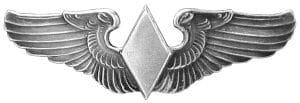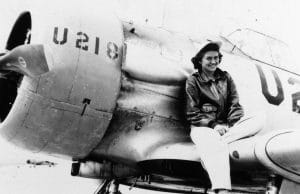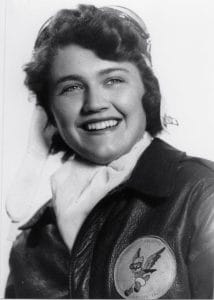
A pilot, Young caught the flying bug at 6 years old: a plane had landed in the field of her family’s Nebraska farm, and the pilot told her, “Don’t touch that plane, little girl.” Her son Bill picks up the story: “That was the wrong thing to say to her. She went right up and started touching everything. That day, she decided she was going to learn to fly.” She did, starting in 1937, but it wasn’t easy: first, she needed the money. She got it by leasing some land from neighbors to grow wheat to sell. Then, initially without telling her mother, she rode the bus 50 miles to the airport in Ogallala, Neb., for her lessons. She was 14 years old.

During World War II, America desperately needed trained pilots, and on August 5, 1943, the military started recruiting female pilots to be WASPs — members of the Women Airforce Service Pilots. More than 25,000 women volunteered, including Young; 1,830 were accepted and 1,074 completed training, including Young. The training was strenuous, following the same program as male pilots: 560 hours of ground school, 210 hours of flight training, and had to know Morse code, meteorology, military law, physics, aircraft mechanics, navigation, and other subjects — yet the women earned only 2/3 of the male pilots’ pay. The WASPs’ job was to free up those male pilots for combat duty. They ferried aircraft, tested new planes, towed drones and targets, and trained other pilots. At one fuel stop, Young said, the man filling her plane said he should be flying it, since “I’m the man.” Her reply: “If you were, I would have noticed.” While they earned military flying wings, WASPs had no military rank or standing, despite efforts of Congress to grant them such status at the time, partly because large media outlets such as Time magazine and the Washington Post editorialized against the women pilots, saying the military should “give the jobs back to men.” By December 20, 1944, in part thanks to women pilots being flight instructors, the military had enough men to fill all the missions, so the WASPs were disbanded; they had delivered 12,652 aircraft of 78 different types, including fighters, bombers, and jets.

Afterward, Young worked to get full military recognition of the WASPs while working at various jobs, including a stint as a food columnist at the Colorado Springs Gazette Telegraph, and being named 1985’s “Working Woman of the Year” by the state of Colorado. The G.I. Bill Improvement Act of 1977 established that WASPs were “active duty” members of the military, and were given certificates of Honorable Discharge, but they weren’t given their World War II Victory Medals until 1984. In 2010, approximately 300 surviving WASPs were awarded the Congressional Gold Medal. Today, Bill Young estimates that only about 30 are still alive. Millicent Young died on January 12 from chronic obstructive pulmonary disease. She was 96.
